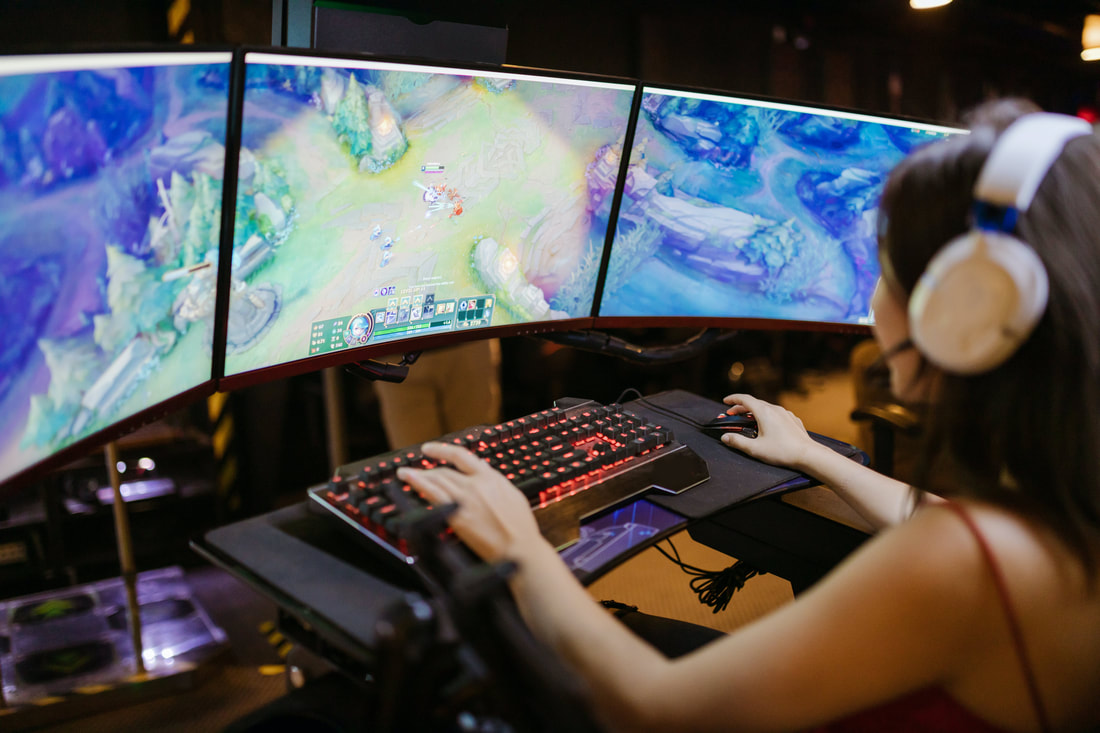|
Welcome to week five of my series on enhancing public library services for patrons experiencing homelessness. In the realm of public libraries, the well-being and empowerment of library staff is paramount. This blog post discusses the importance of robust training programs, support systems, and feedback mechanisms, all aimed at equipping library staff with the necessary tools and confidence to maintain a calm and inclusive library atmosphere. Comprehensive Training Programs
Build Robust Support Systems
Generated with DALL·E. Effective Feedback Mechanisms
Foster a Culture of Continuous Learning
Recognize and Reward Efforts
Empowering library staff through comprehensive training, robust support systems, effective feedback mechanisms, and recognition of their efforts, not only enhances their professional skills but also nurtures their well-being and improves job satisfaction. This holistic approach ensures the library remains a place of calm, inclusion, and effective service, where both staff and patrons feel valued and understood. Let's continue to invest in our team, the heart of our library, to make a meaningful impact in the lives of all who walk through our doors.
0 Comments
Libraries, as public spaces, are not immune to conflicts. This blog post expands our discussion on enhancing services for individuals experiencing homelessness by focusing on de-escalation techniques. De-escalation techniques are strategies used to reduce the intensity of a conflict or potentially volatile situation. They involve calming the situation, ensuring safety, and finding a peaceful resolution. These techniques assist in maintaining a peaceful and respectful environment. Generated with DALL·E. Understanding the Root of Conflict
Effective Communication Skills
Non-Threatening Body Language
Solution-Oriented Approach
Knowing When to Seek Help
Photo by SHVETS production from Pexels. Post-Conflict Resolution
By effectively applying de-escalation techniques and fostering a supportive environment, libraries can create a more harmonious and safe space for all patrons, including those experiencing homelessness. These strategies help in ensuring our libraries remain welcoming and peaceful havens for everyone in the community.
Welcome back to my series. This blog post explores practical tools and strategies to enhance library services for individuals experiencing homelessness. Integrating these into daily library operations is key to fostering a welcoming and inclusive environment for every member of the community. Policy Adaptations for Inclusivity
Creating Safe and Respectful Spaces
Staff Training and Empowerment
Community Outreach and Engagement
Technology and Resource Accessibility
By implementing these practical tools and strategies, libraries can transition from theoretical understanding to effective practice in serving individuals experiencing homelessness. These measures not only make libraries more inclusive but also reinforce their role as vital community hubs offering support, resources, and a welcoming space for all. As we step into the new year, I want to extend my warmest wishes for a Happy New Year to all my readers. May 2024 bring you joy, peace, growth, and prosperity.
Empathy lies at the heart of effective library service, particularly when serving vulnerable groups such as individuals experiencing homelessness. This blog post focuses on methods and strategies to foster an environment of understanding, respect, and inclusivity. A human-centric approach not only benefits patrons but also contributes to a calmer, safer library atmosphere for everyone. Understanding Trauma-Informed Care
Strategies for Empathetic Communication
Generated with DALL·E. Creating an Environment of Understanding and Respect
Role-Playing Scenarios
Photo by cottonbro studio from Pexels. Fostering a Calm and Safe Atmosphere
Photo by Diana from Pexels. Building Long-term Relationships
By enhancing our empathy skills and making small but significant changes in our policies and environment, we can make the library a more welcoming and supportive space for all patrons, especially those experiencing homelessness. This approach not only benefits those in need but enriches the library community as a whole. As we approach the Winter Solstice and the holiday season, I'd like to extend my heartfelt wishes for a wonderful Winter Solstice, a Merry Christmas, and joyous holidays to all. May this season bring warmth and understanding into our lives and communities. Let's embrace the spirit of inclusivity and warmth, extending our best wishes to everyone, regardless of how they choose to observe these special times.
Welcome to week one of my series on enhancing public library services for individuals experiencing homelessness. Today, we delve into understanding the complex and multifaceted nature of homelessness. This understanding is crucial for librarians who are often on the front lines of community service and can play a vital role in supporting and serving this vulnerable population. Generated with DALL·E. 1. The Need for Empathy and EducationIn our communities, homelessness is a prevalent issue. As librarians, creating an empathetic environment is essential. Educating ourselves and our teams about the realities and challenges of homelessness helps us transcend common myths and stereotypes. Workshops and sessions, such as Ryan Dowd’s training courses on working with individuals experiencing homelessness, provide valuable insights into the socio-economic factors, mental health concerns, and systemic obstacles contributing to homelessness. Key Points
Common Myths and Stereotypes about Homelessness
Generated with DALL·E. 2. Recognizing and Responding to TraumaMany individuals experiencing homelessness have faced significant trauma. It’s essential for library staff to recognize the signs of trauma and understand how it might affect behaviour. A trauma-informed approach, including using a calming tone, avoiding confrontational body language, or showing patience, can significantly impact our interactions. Key Points
Personal ExperienceExpanding on the concept of a trauma-informed approach, I’d like to recount a personal encounter that underscores its value. I previously worked at a library where there was a patron experiencing homelessness, who was also battling deep-seated paranoia due to negative past interactions with various organizations and authority figures. Recognizing the signs of their trauma from experiences shared by other staff members, I made sure our initial conversation occurred in a safe, semi-private space, but largely let the patron choose the area so they felt safe and more in control of the engagement. During our conversation a staff member stopped by to inform me someone was waiting to speak with me in my office. I suspected and later confirmed this was fabricated, but it provided an ‘out’ of the conversation if needed. Even though the conversation had already lasted over a half hour when I was presented with the ‘out’, I didn’t use it and instead let the patron choose when to disengage from our conversation. The setting for our conversation and my decision not to take the ‘out’ was crucial for genuine listening and empathy, which are key elements in adjusting our interactions with trauma-impacted individuals. As my understanding of the patron’s story grew, it became clear how important it was to tailor my behaviour to accommodate their needs. For instance, when my family visited the library, I made a point to warmly introduce them to this patron, who was sitting at the puzzle table. My mom is particularly fond of the puzzle table at her local library, so it was something I wanted her to see. Rather than pointing to the table from a distance, which might have been perceived negatively by the patron who had shared concerns that staff were ‘talking behind their back’, I chose to introduce my family to the patron and share stories about the puzzle table at my mom’s local library. This careful approach was driven by my awareness of the patron's paranoia and is an example of adjusting interactions based on awareness of trauma. 3. The Realities and Challenges of HomelessnessHomelessness is not a uniform experience; each person has a unique story. Therefore, library services might need to adapt to be more accessible to those experiencing homelessness. This could include adjustments to policies like ID requirements, loan periods, or fines. Key Points
Realities and Challenges of Homelessness
Photo by Ilya Melnikov from Pexels. 4. The Importance of Genuine Listening and ConcernActive listening and genuine concern can profoundly impact those who often feel marginalized. Small acts of kindness and understanding contribute significantly to creating inclusive and supportive library spaces. Key Points
5. Upholding Dignity and RespectTreating every individual with dignity and respect is fundamental in library services. We must remember that homelessness does not define a person's entire identity. Key Points
6. Walking in Their ShoesParticipating in empathy exercises like role-playing and community outreach programs can provide invaluable insights into the challenges faced by those experiencing homelessness. Sleep out events are also powerful in raising awareness and understanding. Key Points
Generated with DALL·E. Personal ReflectionDuring the late 2000s, I hitchhiked, couch-surfed, and stayed in hostels. While these experiences are not directly equivalent to chronic homelessness, they offered valuable insights into the uncertainties and challenges of transient living. They deepened my empathy and understanding of the concerns about personal safety and security of belongings, concerns often expressed by individuals experiencing homelessness. Similarly, I encourage others to reflect on any experiences they may have had that involved uncertainty, lack of permanent shelter, or reliance on the kindness of others. These reflections, even if they stem from situations far less severe than homelessness, can foster a deeper understanding and connection with the experiences of those who face homelessness. Such personal insights can be instrumental in developing a more empathetic and informed approach to supporting and serving this community. Understanding homelessness goes beyond statistics; it's about humanizing those affected and building a foundation of empathy, respect, and dignity. By educating ourselves and our teams, acknowledging trauma, and upholding a foundation of dignity and respect, we can better meet the needs of patrons experiencing homelessness. Stay tuned for more posts in this series as we continue to explore ways to enhance public library services for individuals experiencing homelessness.
Enhancing Public Library Services for Individuals Experiencing Homelessness: A Deep Dive Series6/12/2023 Generated with DALL·E. Welcome back to my blog! This week, I'm excited to announce a new series that dives deep into a critical and increasingly relevant topic for public libraries: improving our approach to serving patrons experiencing homelessness. Did you know that over 235,000 people in Canada experience homelessness in any given year, with 25,000+ on any given night? This striking fact, reported in Statistics Canada's review of Canadian homelessness data, underlines the scale of the challenge and highlights the significant number of unhoused individuals who might seek refuge and services in public libraries. As libraries continue to evolve, enhancing our inclusivity remains a core part of our mission, with a focus on ensuring that patrons experiencing homelessness receive equitable service alongside all other community members. Over the next six weeks, I'll share detailed insights, practical strategies, and examples to support this inclusive and supportive environment for all. This comprehensive series is designed to deepen our understanding and enhance library services for some of the most vulnerable members of our community. Join me on this enlightening journey, starting next week with an exploration into the complex nature of homelessness and how we can better respond to it in the library setting. Week One: Understanding HomelessnessThe first post in the series will unravel the multifaceted nature of homelessness. I'll discuss root causes, debunk common myths, and share insights into the everyday realities faced by individuals without stable housing. As librarians, gaining a clear understanding is pivotal in effectively supporting and serving patrons experiencing homelessness. This upcoming post will provide practical tips, practices, and actions tailored for the library environment, all aimed at enhancing our understanding of the challenges faced by individuals experiencing homelessness and improving our interactions with them. By arming ourselves with this knowledge, we set the stage for creating a more inclusive, empathetic, and supportive environment for all patrons, while also building the confidence of our staff. Photo by Pixabay from Pexels. Week Two: Empathy in Library ServicesEmpathy is at the heart of our service and is especially crucial when serving vulnerable populations. In the second week, I’ll share methods for fostering an environment of understanding and respect, highlighting the importance of trauma-informed care and empathetic communication. This approach not only aids in making libraries more inclusive, but also contributes to a calmer and safer atmosphere for all who use library services. Week Three: Practical Tools and StrategiesMeeting the needs of patrons experiencing homelessness requires specific approaches. Week three will cover various strategies, from policy adaptations to creating safe and respectful spaces within the library, providing staff with the tools they need to serve all patrons effectively. These strategies are crucial in ensuring that our libraries serve as inclusive environments where every member of the community feels welcome. Week Four: De-Escalation TechniquesConflict can arise in any public space, and libraries are no exception. Week four will focus on maintaining a peaceful and respectful library environment. I'll introduce de-escalation techniques tailored to the unique challenges that may arise with patrons experiencing homelessness. These techniques will help staff maintain calm and control in challenging situations, contributing to a safer and more harmonious library environment. Week Five: Empowering Library StaffThe well-being of our staff is as important as that of our patrons. In week five, the focus will be on training programs, support systems, and feedback mechanisms with the goal of ensuring library staff are well-equipped and supported in their roles. A confident and empowered staff is key to maintaining a calm and inclusive library atmosphere. Photo by Yan Krukau from Pexels. Week Six: Community CollaborationNo library operates in isolation. In the final week, I’ll discuss the importance of building partnerships with local shelters, social services, and other community organizations. These collaborations are vital for extending the library’s reach, enhancing services, and strengthening the library’s role in the community. Throughout this series, I aim to provide actionable insights, strategies, and expert advice to help public libraries become more inclusive and supportive spaces for all community members, particularly those experiencing homelessness. Each week will offer a comprehensive look at a different facet of this important topic, providing a roadmap for libraries to make a meaningful difference in their communities. Stay tuned for an insightful journey into enhancing public library services for individuals experiencing homelessness.
In the dynamic realm of library services, understanding the community you serve is paramount. This blog post is inspired by and expanded from a brief presentation I made on the crucial steps for learning about the community a branch library serves and how this knowledge profoundly influences service delivery. Grasping this aspect of one’s role as a librarian is a crucial step toward offering effective services. This piece aims to assist you through this essential process, enabling you to significantly impact and contribute to your community's well-being. Six Key Steps to Understanding Your Library's Community1. Community Analysis and Research
2. Engagement with Community Members
Photo by Kampus Production from Pexels. 3. Collaboration with Local Organizations
Effective Networking Tips
4. Library Usage Analysis
5. Staff Involvement and Training
6. Regular Review and Adaptation
Generated with DALL·E. Impact of Understanding the Community on Service DeliveryUnderstanding your community shapes every aspect of library service delivery:
For librarians, engaging with the community is a continuous journey that profoundly affects your library's capacity to fulfill its mission and serve its patrons. This process of perpetual learning and adaptation ensures your library's relevance and impact within the community. A library in tune with its community is more than just a resource centre; it's a vibrant hub of shared knowledge, culture, and connection—a place that truly makes a difference. The presentation that inspired the post. Hello, fellow librarians and information enthusiasts! Today, I'm thrilled to delve into the nuanced and often daunting task of selecting and transitioning to a new Integrated Library System (ILS). The choice of an ILS is more than just a technical decision; it's a vital component that impacts the daily operations for both staff and patrons. An ILS is mission-critical and its functionality is as crucial as any other essential service in a library. When handled correctly, transitioning to a new ILS presents a tremendous opportunity for growth and improvement, transforming a high-impact event into a stepping stone to enhanced library services. Generated with DALL·E. Considerations for a Future-Ready ILSIn the dynamic landscape of library services, selecting an ILS that aligns with your library's long-term vision is essential. A future-ready ILS is not just about managing current needs but also being adaptable to emerging technologies and evolving patron demands. Let’s explore some key factors to consider: System IntegrationThe ability of an ILS to integrate with other systems significantly enhances its utility. A prime example is the partnership between TLC (The Library Corporation) and MessageBee. This collaboration has brought enhanced messaging integration to Library Solution customers. MessageBee offers advanced messaging capabilities, such as customizable notifications and detailed message analytics. Such integrations show how the choice of an ILS can significantly impact the choice, availability, and functionality of other applications and services in the library. Data ManagementEffective data management is at the heart of any good ILS. This includes not only efficient organization and retrieval of data but also robust backup solutions and data integrity measures. Mobile AccessibilityWith the widespread prevalence of smartphones and tablets, an ILS with strong mobile accessibility is crucial. This feature ensures that both staff and patrons can access the library's catalog and resources conveniently from their mobile devices. However, be aware that some companies might charge extra for a mobile app or premium mobile experience, so it’s important to factor this into your decision-making process. User SupportFinally, the level of user support provided by the ILS vendor is a critical factor. This includes training for library staff, customer service for technical issues, and regular updates to the system. Generated with DALL·E. Standard and Open Data FormatsA critical aspect in choosing an ILS is its compatibility with standard and open data formats. These formats ensure smooth data migration and interoperability. Standard data formats are established protocols for encoding data, developed and endorsed by recognized standards organizations. These formats ensure consistency and compatibility across different systems and platforms. In library systems, standard data formats facilitate the sharing and exchange of information. A notable example is MARC (Machine-Readable Cataloging), a standard for bibliographic data representation. Another example is Dublin Core, a set of vocabulary terms used to describe various resources, such as web pages, books, and images. Open data formats, in contrast, are publicly available and free from patents or copyrights, and not controlled by any single company or entity. These formats support transparency, accessibility, and interoperability, allowing users from different systems to access, share, and use data without restrictions. Examples in the context of library systems include XML (eXtensible Markup Language) and JSON (JavaScript Object Notation). XML is widely used for its flexibility in data interchange applications, while JSON is favored for its lightweight nature, particularly in web applications. These open formats ensure that data remains accessible and interpretable over time, irrespective of changes in technology or specific systems used by libraries. Here are some popular ILSs and ILSs I have used along with their supported data formats:
Tips for a Smooth ILS TransitionTiming is everything. Aligning a transition with a move to new server hardware or cloud services can be very beneficial. This approach allows running both systems simultaneously, easing the transition process and ensuring continuous service availability. Remember, thorough planning, staff training, and effective communication are the keystones of a smooth transition. Generated with DALL·E. Data InteroperabilityData interoperability refers to the seamless exchange and understanding of shared data between different systems. In a library context, this means ensuring a smooth transfer of bibliographic data, patron information, and transaction histories from the old ILS to the new one. Interoperability is essential for maintaining continuity and service quality in libraries. It allows for the fluid exchange of information across various platforms. When libraries switch to a new ILS, interoperability ensures that valuable data is accurately transferred, preserved, and available in the new system. To ensure effective data interoperability:
Transitioning to a new ILS is a significant step forward for any library. By focusing on future-readiness, standard data formats, and interoperability, libraries can ensure a smooth transition and set the stage for enhanced services and operations. Remember, the goal is not just to replace a system but to harness technology to better serve our communities and foster a culture of continuous improvement and innovation in library services. Generated with DALL·E.
As a librarian with a passion for helping others achieve their dreams, I've encountered budding authors curious about the self-publishing landscape in Canada. The world of self-publishing can be both exciting and daunting. To help authors navigate this journey, I've compiled the following guide that covers everything from manuscript preparation to choosing the right platform for your eBook. Step 1: Finalize Your ManuscriptYour manuscript is the core of your eBook. Before your story reaches the eyes of eager readers, it’s essential to perfect your manuscript. Calibre is a fantastic resource for this. Calibre is open-source software that not only helps in formatting your manuscript for various e-readers but also assists with metadata editing, which is crucial for eBook libraries and enhancing your eBook’s discoverability. Scrivener and Grammarly can be instrumental for final edits, ensuring your grammar and narrative flow are spot on. Additionally, joining a community like Scribophile can provide critical peer feedback to further hone your work before it greets the world. Photo by furkanfdemir from Pexels. Step 2: Design a Captivating CoverThey say, "Don't judge a book by its cover," but let's be honest – a great cover can make all the difference. Canva offers user-friendly tools to design your own covers, even if you're not a graphic design expert. For those who are more adept, Adobe Photoshop remains a top choice. Alternatively, hiring a professional cover designer can be a worthwhile investment. AI-generated art has also emerged as a novel and creative approach to cover design, offering unique and eye-catching imagery. Lastly, don’t overlook the potential of stock images from sites like Shutterstock and Pexels, ensuring you have the rights to any images used. Step 3: Choose the Right Self-Publishing PlatformSelect a platform that aligns with your publishing goals. Each platform has its pros and cons:
For a comprehensive comparison of platforms, The Writers' Union of Canada offers valuable insights and advocacy for self-published authors. Remember, you don’t have to limit yourself to one platform. Many authors choose to publish on multiple platforms to maximize their reach. Generated with DALL·E. Step 4: Set Up Your AccountCreate an account on your chosen platform. This process will involve providing personal information, tax details, and setting up payment methods for receiving royalties. Ensure all information is accurate and up-to-date. Step 5: Upload Your BookAdhere to platform-specific guidelines when uploading your book. Include your manuscript, cover, a compelling description, strategic keywords, and a well-researched price point. Research similar titles in your genre, especially on the platforms you plan to be available on, for guidance. Step 6: Publish and PromotePost-publication, pivot to promotion. Employ social media, establish an author website, and cultivate a newsletter subscriber base. Engage with local libraries and community groups, encouraging them to feature your book. Step 7: Monitor Sales and FeedbackTracking your eBook's performance through sales and reader feedback is essential to gauge its impact. This intel is not just for ego; it's for understanding your audience and enhancing your future works. Step 8: Expand Your ReachBeyond the big names, platforms like Smashwords and Draft2Digital offer avenues to additional markets. Print-on-demand services can complement your digital presence, catering to readers who prefer physical copies. ConclusionSelf-publishing an eBook is a rewarding journey that goes beyond writing. It’s about becoming an entrepreneur, a marketer, and a storyteller all rolled into one. With the right tools, a commitment to learning, and an adaptable strategy, your narrative has the potential to captivate audiences across Canada and the globe. Happy writing and publishing! Generated with DALL·E.
Generated with DALL·E. As a librarian and a cyclical gamer—sometimes immersed in multiple titles, occasionally taking breaks, or dedicating countless hours to favorites like Star Wars Battlefront II—I often find myself at the confluence of storytelling, technology, and cultural preservation. The familiar hum of my home console, which I'm considering upgrading to the more potent PS5 slim, echoes the vibrant activity of the library. This duality is a constant reminder of gaming's evolving nature, where each innovation brings both fresh excitement and a sense of nostalgia. My recent viewing of "The Entire History of Video Games" by NeverKnowsBest has led me through a six-hour exploration of gaming's most transformative periods, from Atari's dramatic downfall to the industry's impressive recoveries and milestones. Photo by RDNE Stock Project from Pexels. Gaming's history is one of adaptability; it has seen the ascent and fall of countless consoles, the fluctuations of PC gaming's relevance, and the rise of mobile gaming as a formidable competitor to traditional consoles. Each phase of change has distinctively sculpted the gaming industry. Now, as I evaluate systems like the versatile Steamdeck, the portable Nintendo Switch, and the powerful PS5, I'm captivated by how integral change is to the industry’s innovative essence. The current gaming landscape, with significant moves like Microsoft's acquisition of Blizzard and widespread monetization practices, sparks debate about the future of the industry's creative spirit. However, gaming has always been characterized by its ability to evolve. The ongoing trend of reimagining classics through remakes, coupled with advancements in VR, points to a future where respect for gaming heritage intersects with cutting-edge technology. Photo by Tima Miroshnichenko from Pexels. Libraries serve as vital guardians of this history, creating connections across time with collections and programs that engage diverse audiences. We are inspired by gaming's extensive history and strive to support both the preservation of classic games and the discovery of new gaming narratives. A key ally in this endeavour is Flashpoint Archive, which stands out in the digital preservation landscape. This project has been pivotal in rescuing a vast collection of flash-based games and animations, ensuring these pieces of gaming history remain accessible and appreciated. Libraries curate a variety of experiences, not just books. Whether you're a veteran gamer contemplating the next console launch, a scholar tracing gaming's evolution, or a newcomer to digital play, libraries are a treasure trove of knowledge and communal exploration. "The Entire History of Video Games" is more than a historical account; it is a comprehensive guide that underscores the library's role in the continuing conversation about our cultural heritage within the vast realm of video games. Explore "The Entire History of Video Games"As we navigate gaming's unfolding epic, your insights and experiences add depth to our collective story. The choices we make, from the consoles we select to the stories we engage with, weave into the expansive narrative of our digital culture—a narrative defined by endless potential and lasting impact.
In closing, "The Entire History of Video Games" is not merely a retrospective. It's a celebration of the shared path we tread, highlighting the library's crucial role in fostering an ongoing dialogue between video games' rich past and their limitless future. I look forward to hearing your thoughts on video games and libraries. What are you playing, what are you anticipating, and how do your library experiences shape your gaming journey? Does your library have a video game collection or offer video game programming? What are some of your favourite moments from the history of video games? Let's start a conversation about any new developments and upcoming releases that excite us all. |
Christopher DesrochersModern Day Renaissance Man Categories
All
Archives
April 2024
|


























